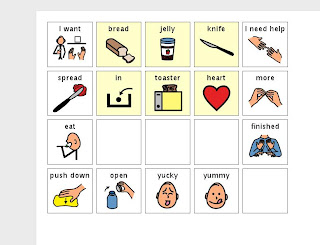There are no cute little printables with this posting. Sorry! I love making materials, and trying them out with children. Most of my days are spent teaching children, and getting them excited about learning and life. I wish everything was rosy and fun, all the time.
Unfortunately, children are sometimes stressed. Whether the anger is internal, or environmental; whether it's caused by a communication barrier or not; whether anger is caused by a misguided adult or confused child --all are variables with the same result. Lashing out by a child (sometimes a strong child) can lead to upset adults, and psychological and physical trauma on both sides.
With some children, this is a frequent, sometimes violent occurrence. I can tell you, that in my undergraduate years, and in my graduate school, there was
no mention of aggression and certainly no tips on how to deal with this. I was unprepared, totally. In my first job at a residential school, I witnessed a parent beating his teenaged deaf child in my classroom, and a few extreme violent acts of students towards teachers (resulting literally in amputation of body parts). My next job was no better, but then, I witnessed the reverse--retaliation of staff towards students (this time resulting in fired teachers.) Of course, this was a while ago, and I hoped that preparation in college education programs would have changed; however, judging from reactions of graduate students that work with me when witnessing aggression, I'm not quite sure that such programs are willing to address this issue adequately. I feel personally responsible, then, to impart my experiential knowledge to young future speech pathologists who choose to have practicum placements with me.
I've developed a few coping mechanisms for dealing with student aggression:
1. For a student who is excessively anxious or stressed, I work with the child exclusively in his everyday classroom. There are more people around, it's his or her natural environment, and it is a more natural setting.
2. I do not restrain children unless the child is harming himself. I physically back off when issues arise. I deflect blows or bites; I don't confront them.
3. I try to "read" children---often the behavior the child is exhibiting is communicative.
4. I teach
alternative means to escape from an activity---it might be as simple as pointing to a toy, touching a 'finished' icon, or saying 'all done'.
5. I use a
picture schedule for all speech therapy sessions--whether it's in the classroom, in a group, or in my speech room. The student can see that there is an end to the time with me.
6. The last item on my picture schedule is a
very preferred activity.
7. For the most anxious children, there may only be
2 activities on the schedule. ("First, Then")
8. With my graduate interns, although I try not to put them in the position where they have to deal with aggression, I do talk about this openly. The tips I presented above, I provide to them. I teach and model; hopefully, they will carry these lessons to their next setting.
It's too bad this was never taught to me prior to teaching. I've seen a few teachers 'let go' due to an inability to deal with students. Were those teachers properly instructed in their college programs? I know that I wasn't!
Do any of you have helpful tips? Please post.















































